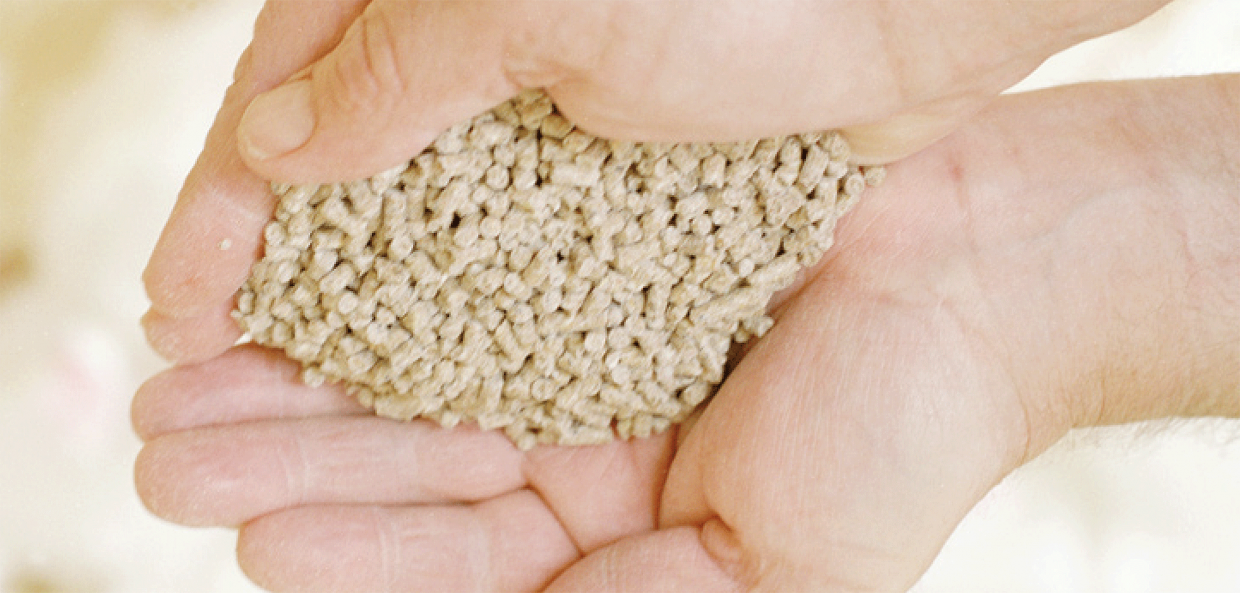Hot Weather Nutrition for Commercial Turkeys
Turkey breeder performance can be negatively affected by hot weather conditions. The bird responds to these stressful conditions by trying to control its body heat and decrease the heat ‘burden’ on the body.
One of the key factors which impacts on the birds performance during heat stress is feed intake. Feed consumption increases body temperatures, this is known as the heat increment of feeding, so in warm weather conditions birds will reduce feed intake to reduce this additional heat ‘burden’. However the bird needs to meet its daily nutritional needs to maintain growth rate. Increasing the nutrient density of the feed during a heat stress situation has achieved mixed results, this may be related to the different approaches to altering the nutrient density of the diets.
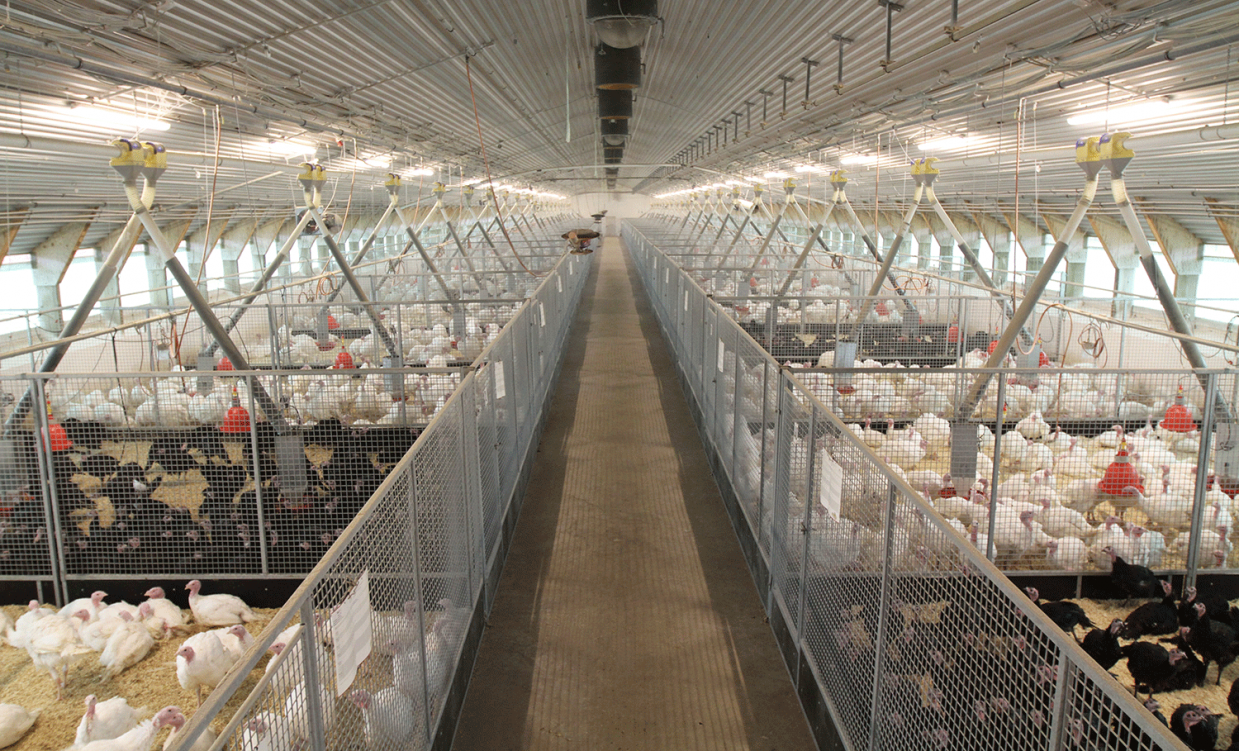
A trial was conducted recently in collaboration with Moorgut Kartzfehn GmbH in Germany to assess if summer time depression in performance could be reduced through various nutritional interventions. This was tested by feeding B.U.T. 6 male birds diets differing in energy, crude protein and amino acid density along with an additional higher nutrient density ‘stress’ regime which included additives to further support health and livability.
Trial design
- Period tested 0 to 147 days
- Number of poults per pen: 67
- 24 pens 1 Total birds: 1608
Dietary treatments:
The control diet was a typical commercial turkey diet based on breed nutrient recommendations.
Treatments 1 to 4 were based on varying energy, crude protein and amino acid densities and fed from 6 to 21 weeks of age (see below). The final treatment (5) was fed from 1 to 21 weeks of age and based on dietary treatment 4 with increased sodium levels and provision of vitamins and betaine through the water to further support bird health.
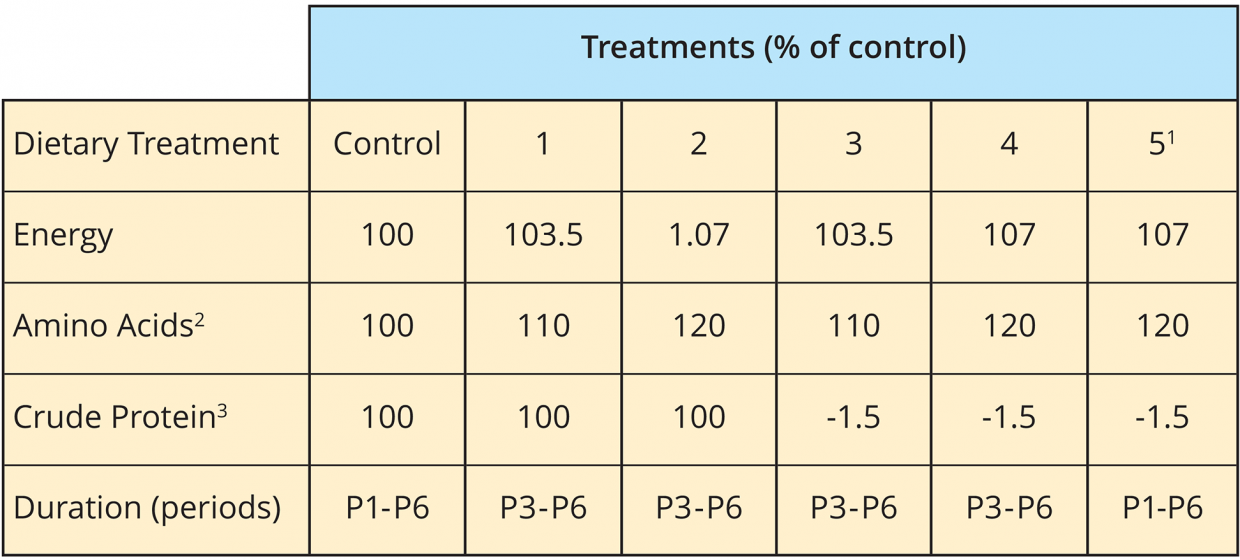
1 Sodium increased to 115% of the control via sodium bicarbonate, addition of betaine and vitamins through the water; 2 Lysine, methionine, threonine and arginine; 3 Absolute reduction in crude protein.
Results
Optimal bodyweight and FCR was achieved at higher energy and amino acid levels (T1 and T2) while maintaining crude protein at the same level as the control. Those birds fed the lower crude protein density diets resulted in poorer liveweight and FCR relative to those fed the higher crude protein regardless of energy or amino acid level.
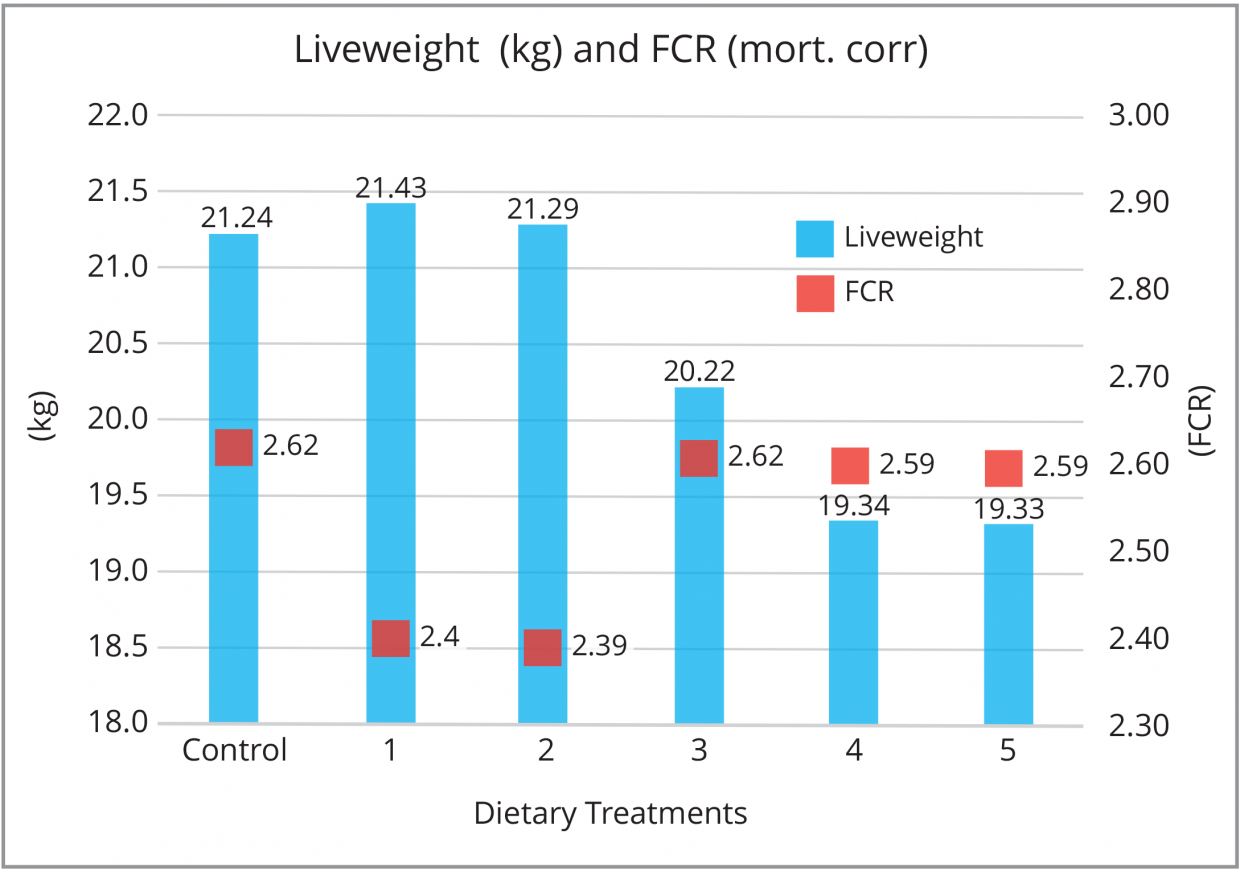
Mortality levels were low across all the treatments, the ‘support regime’ (T5) showed a similar mortality to the control.
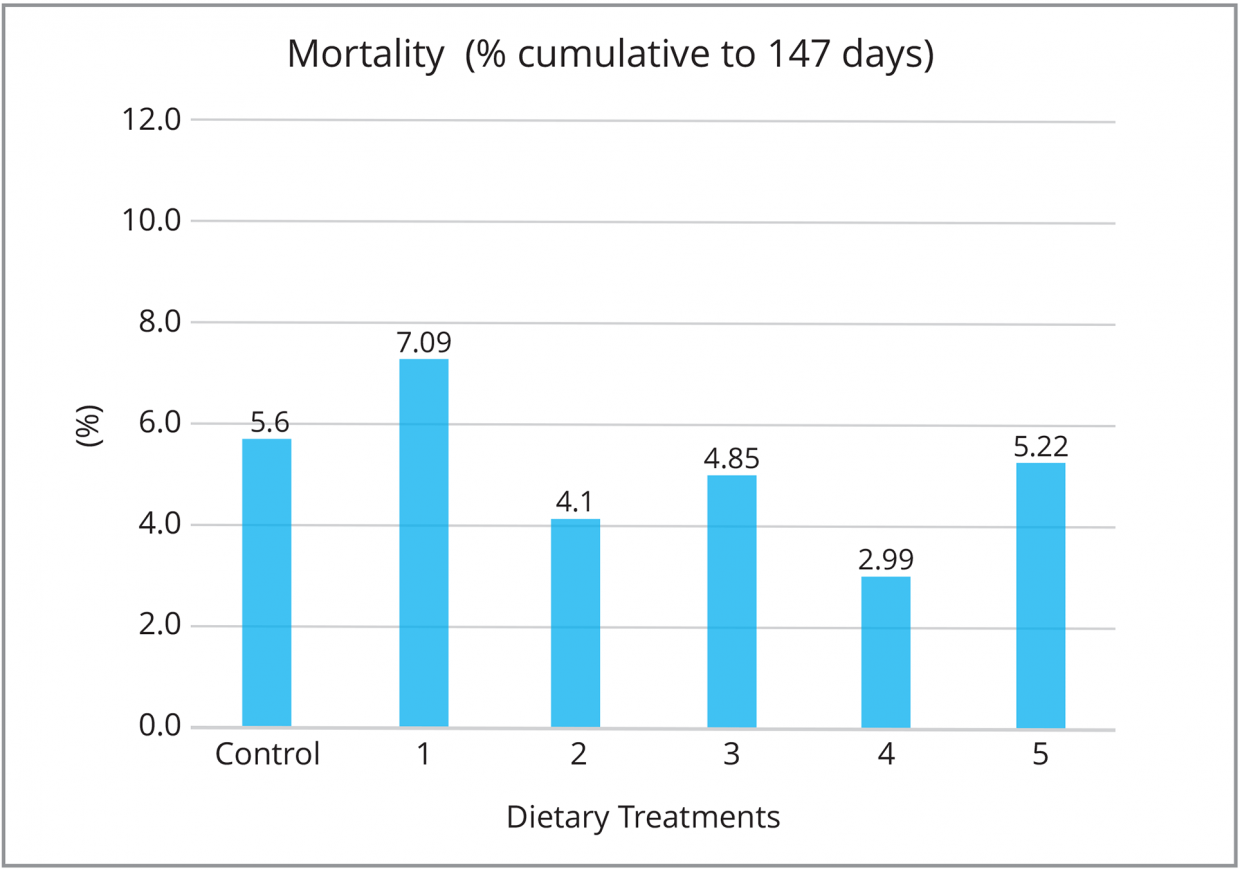
Optimal breast meat yield was achieved on treatment 1, birds fed the lower crude protein treatments resulted in the lowest breast meat yield.
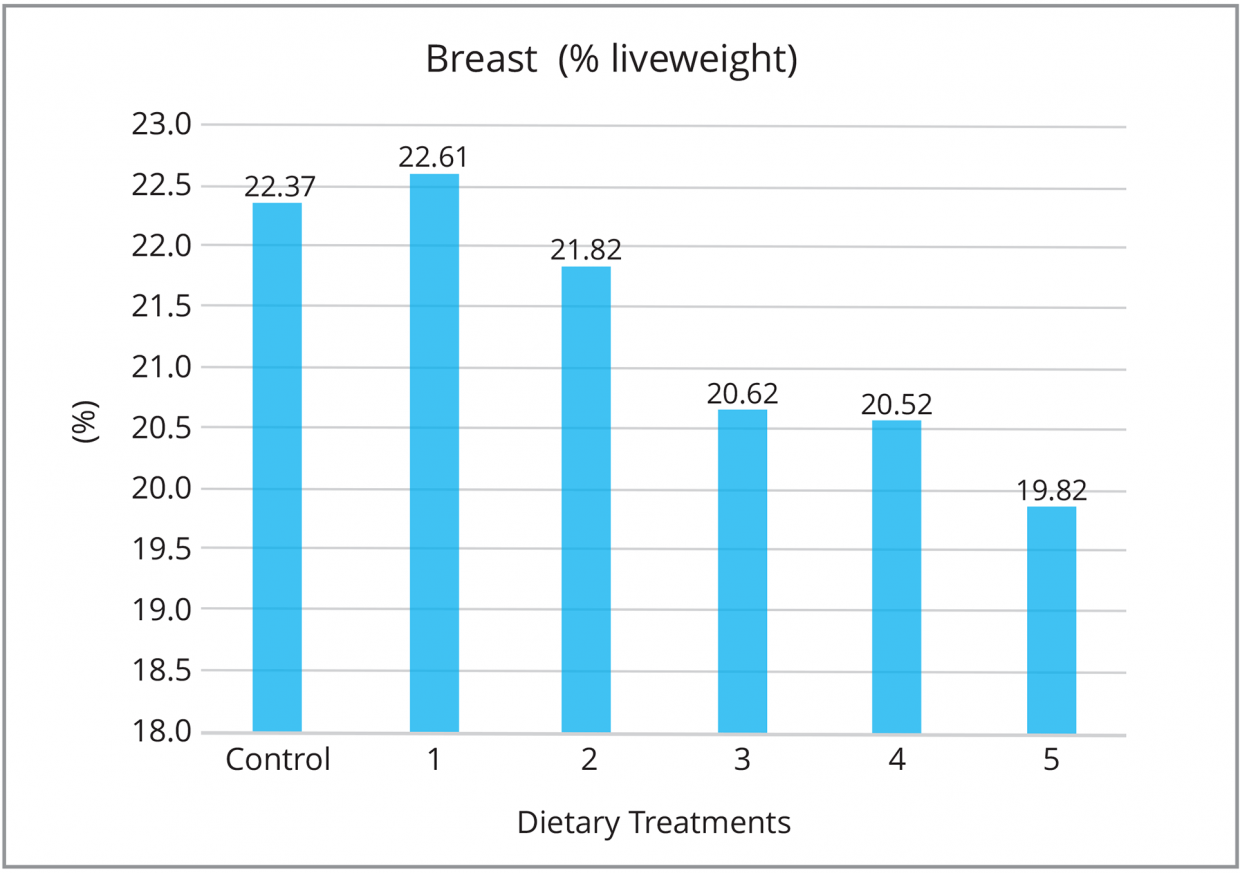
Footpad condition was assessed as per method of Hocking et al. 2008, there was minimal difference in the scores between the birds fed different treatments however birds fed the lower protein density diets tended towards slightly higher numbers of score “0” and “1” relative to birds fed higher protein density diets.
In this evaluation, reduction in crude protein density tended to result in reduced performance relative to other treatments suggesting that a component of crude protein, such as lower order amino acids and/or nonessential amino acids, maybe limiting performance.
The ‘Support regime’ which incorporated betaine and additional vitamins did not show any benefits over other treatments in terms of health or performance suggesting that addition of these specific additives may not help mitigate performance loss during summer conditions.
The results suggest that a strategy to maintain performance of birds in summer conditions should involve maintaining protein density while increasing energy and amino acid density.
In summary a strategy to mitigate the impact of summer conditions on performance and welfare should include the following approaches:
- Closely monitor feed consumption of the flock during hot weather, feed intake can reduce by as much as 10% to 20% during hot conditions.
- Adjust the diet nutrient specification levels to ensure intake of key nutrients are maintained.
- If necessary, increase the energy density of the diet between 103.5% to 107% from 6 weeks of age onwards.
- If necessary, increase amino acid density by a minimum of 10% from 6 weeks of age onwards.
- Maintain a balance of amino acids ensuring the level of lower order amino acids are in balance with lysine, maintaining the crude protein level of the diet may be necessary in order to achieve this.
Other factors can have an impact on how the bird deals with warm weather conditions. Good feed physical quality allows the bird to consume the feed efficiently without expending excess energy consuming ‘dusty’ feed. Providing optimal feed form, consistently, will also support compensatory feed intake during the cooler periods of the day or night.
The trial showed that nutrition can impact bird performance however it mustn’t be overlooked that management of the bird’s environment, such as providing in-house cooling, holds the most potential to maintaining performance in warm weather conditions.
